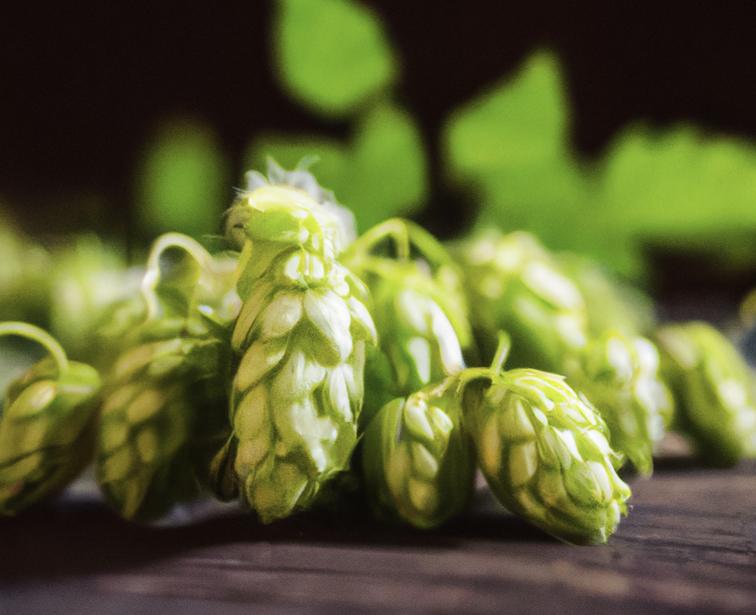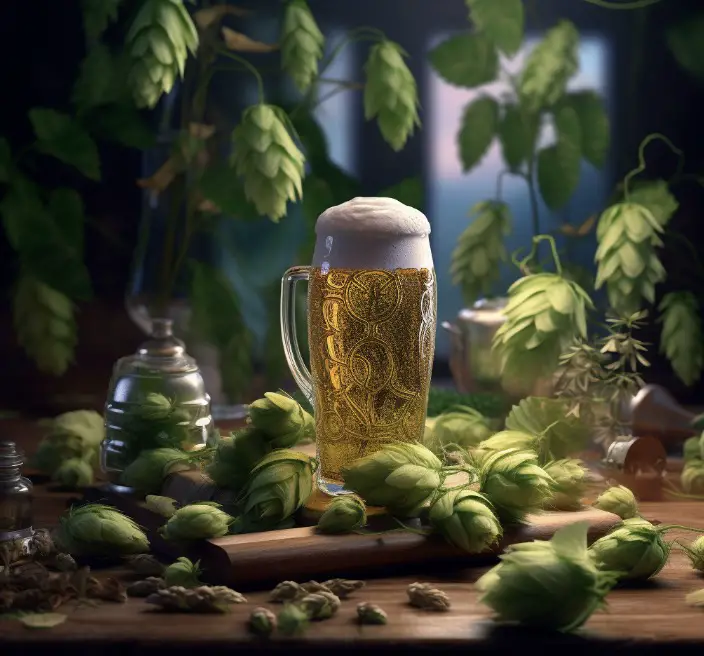Coors Light is a popular American light beer that has been enjoyed by millions of people around the world since its introduction in 1978. As a brewer, I get asked a lot about the ingredients that go into making this refreshing beverage.
One of the most common questions I hear is: “What hops are used in Coors Light?” Well, today, I’m going to delve into that and answer that question for you.
Coors Light primarily uses Galena hops, a high alpha acid hop variety that provides a moderate bitterness and a clean, crisp finish.
Now that we’ve answered the main question, let’s dive deeper into the world of hops and explore more about the Galena hops, their characteristics, and how they contribute to the flavor of Coors Light.
1. A Brief Introduction to Hops
Before we delve into Galena hops, it’s important to understand the role of hops in brewing beer. Hops are the cone-shaped flowers of the *Humulus lupulus* plant, and they play a crucial role in beer production.

They impart bitterness, flavor, and aroma to the beer while also providing antibacterial properties that help to preserve the beer.
There are several different types of hops, each with their own unique characteristics, and brewers carefully select the right hops to achieve the desired flavor profile for their beer. Some hops are more bitter, while others provide more aroma or flavor.
2. The Galena Hops
Galena hops were first bred in the United States in 1968 and were released for commercial production in 1978, the same year that Coors Light was introduced. They were developed by crossing an American wild hop with an English variety called Brewer’s Gold. Galena hops are primarily grown in the Pacific Northwest, particularly in the states of Washington, Idaho, and Oregon.
3. Characteristics of Galena Hops
Galena hops have a high alpha acid content, typically ranging from 11-14%. Alpha acids are responsible for the bitterness in beer, so the high levels in Galena hops make them a popular choice for brewers looking to add a noticeable but not overpowering bitterness to their brews.
In addition to their bitterness, Galena hops also provide a clean, crisp finish to the beer. They are known for their versatility, as they can be used in a wide range of beer styles, from light lagers like Coors Light to more robust ales.
4. Aroma and Flavor Profile
While Galena hops are primarily known for their bitterness, they also contribute to the aroma and flavor of the beer. They have a subtle, fruity character with notes of blackcurrant and citrus, as well as some spicy and woody undertones. However, these flavors and aromas are more subdued in Coors Light, as the hops are primarily used for their bittering properties.
5. Other Hops Used in Coors Light
In addition to Galena hops, Coors Light may also contain small amounts of other hop varieties to further enhance the flavor and aroma of the beer. These additional hops are typically low in alpha acids and are added late in the brewing process to impart more aroma and flavor without significantly increasing the bitterness.
Some of the other hop varieties that may be used in Coors Light include Cascade, Willamette, and Tettnang, which all have their own distinct characteristics and can contribute different nuances to the final product.
6. The Brewing Process
The brewing process for Coors Light is designed to create a light, crisp, and refreshing beer with a low calorie count. The use of Galena hops allows the brewers to achieve the desired level of bitterness while also providing a clean finish that is characteristic of this popular light beer.
During the brewing process, the hops are added at different stages to extract their various properties. The Galena hops are typically added early in the boil to extract their high alpha acids for bitterness, while any additional hop varieties are added later to impart their flavor and aroma.
7. Pairing Coors Light with Food
The crisp, clean taste of Coors Light makes it an ideal choice for pairing with a wide range of foods. Its moderate bitterness and refreshing finish complement spicy dishes, grilled meats, and fried foods, while its subtle flavors and aromas can enhance the taste of lighter fare such as salads, seafood, and poultry.
8. Health Benefits of Hops
While it’s important to enjoy beer responsibly and in moderation, it’s worth noting that hops have been associated with several health benefits. They are rich in antioxidants, which can help to protect the body from the damaging effects of free radicals. Hops also contain compounds that have been shown to have anti-inflammatory, antibacterial, and even anticancer properties.
9. The Future of Hops in Beer
As craft beer continues to grow in popularity, brewers are constantly seeking out new and innovative ways to use hops in their creations. This has led to the development of new hop varieties, as well as the use of innovative techniques such as dry hopping and hop bursting to extract even more flavor and aroma from these versatile flowers.
In the case of Coors Light, the use of Galena hops has remained consistent since its introduction in 1978, providing the beer with its signature bitterness and clean finish that has made it a favorite among light beer drinkers.
Conclusion
To sum up, Coors Light primarily uses Galena hops, which provide the beer with its moderate bitterness and crisp, clean finish. These hops, along with any additional hop varieties that may be used, contribute to the beer’s subtle flavors and aromas, making it a versatile and refreshing choice for a wide range of occasions.
Here are 10 facts about Coors Light and its use of hops:
1. Coors Light was first introduced in 1978.
2. The primary hop used in Coors Light is the Galena hop.
3. Galena hops were first bred in the United States in 1968.
4. Galena hops have a high alpha acid content, ranging from 11-14%.
5. In addition to bitterness, Galena hops provide a clean, crisp finish to the beer.
6. The aroma and flavor profile of Galena hops include fruity notes of blackcurrant and citrus, as well as spicy and woody undertones.
7. Other hop varieties that may be used in Coors Light include Cascade, Willamette, and Tettnang.
8. The brewing process for Coors Light is designed to create a light, crisp, and refreshing beer with a low calorie count.
9. Coors Light pairs well with a wide range of foods, from spicy dishes to lighter fare.
10. Hops have been associated with several health benefits, including antioxidant, anti-inflammatory, and antibacterial properties.
FAQs
Is Coors made with hops?
Yes, Coors beer is made with hops. Hops are one of the four main ingredients in beer, along with water, malted barley, and yeast. Hops provide bitterness and flavor to the beer, as well as acting as a preservative.
Do all beers have hops in them?
No, not all beers have hops in them. Some beer styles, such as Gruit, use alternative herbs and spices for flavor and bitterness instead of hops.
What is the flavor profile of Coors Light?
Coors Light has a light and crisp flavor profile with subtle notes of malt and a clean finish.
What hops is used in Budweiser beer?
Budweiser beer uses a blend of hops, including Hallertau and Tettnang hops.
Does Coors Light have hops in it?
Yes, Coors Light does have hops in it.
What beer isn’t made with hops?
There are some traditional beer styles, such as gruits and sahti, that do not use hops as a bittering agent. Instead, they use a variety of herbs, spices, and other botanicals to provide flavor and balance to the beer.




